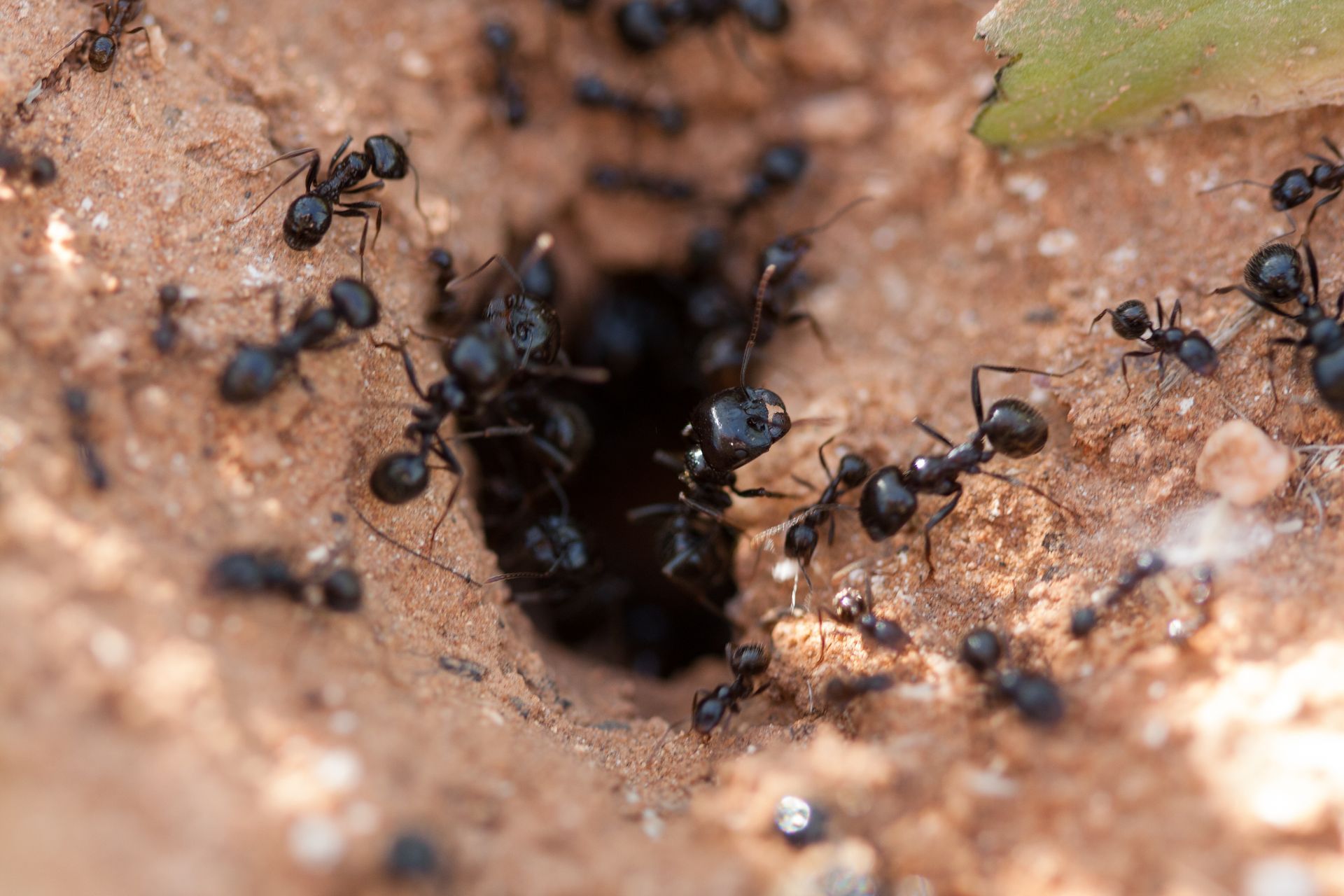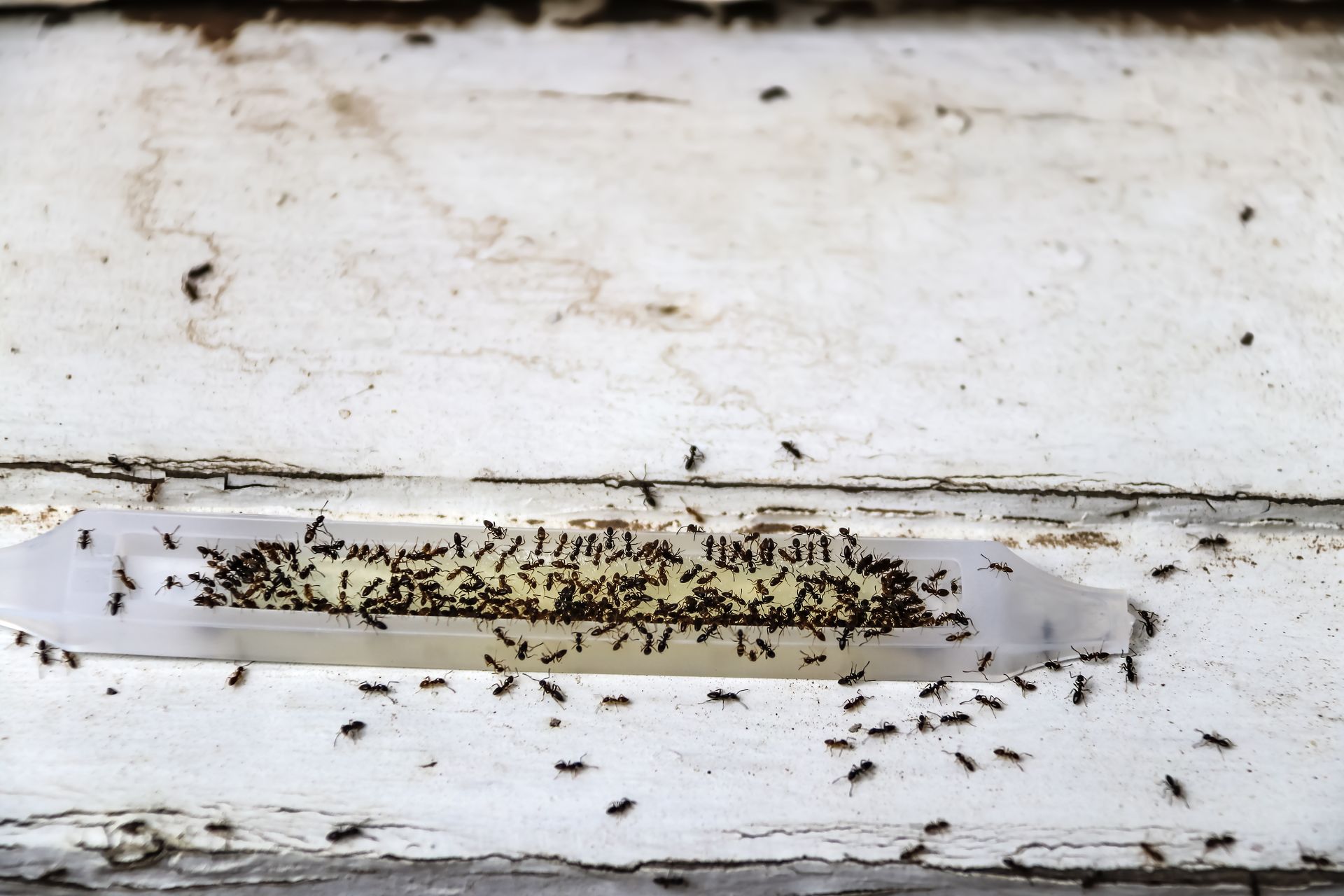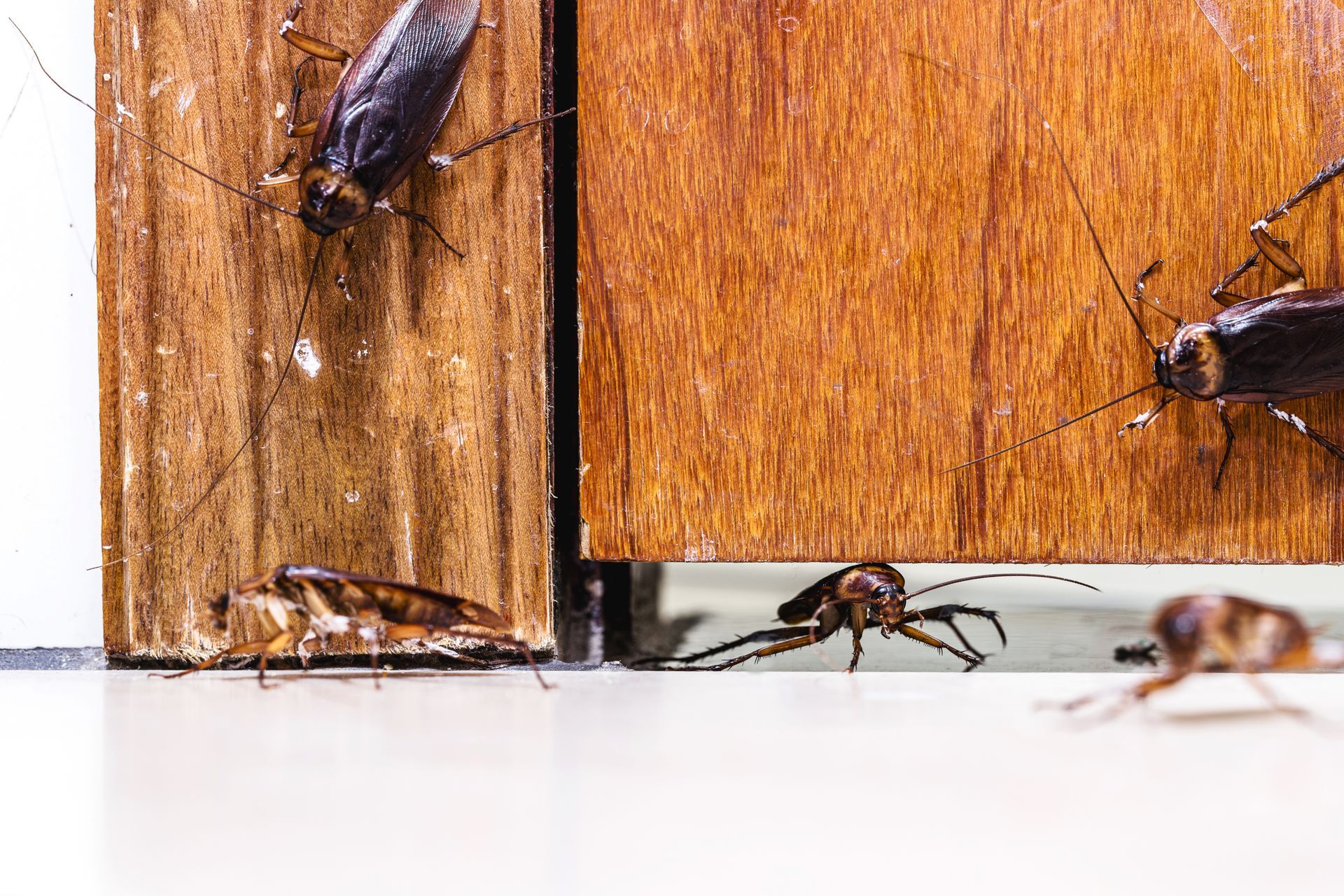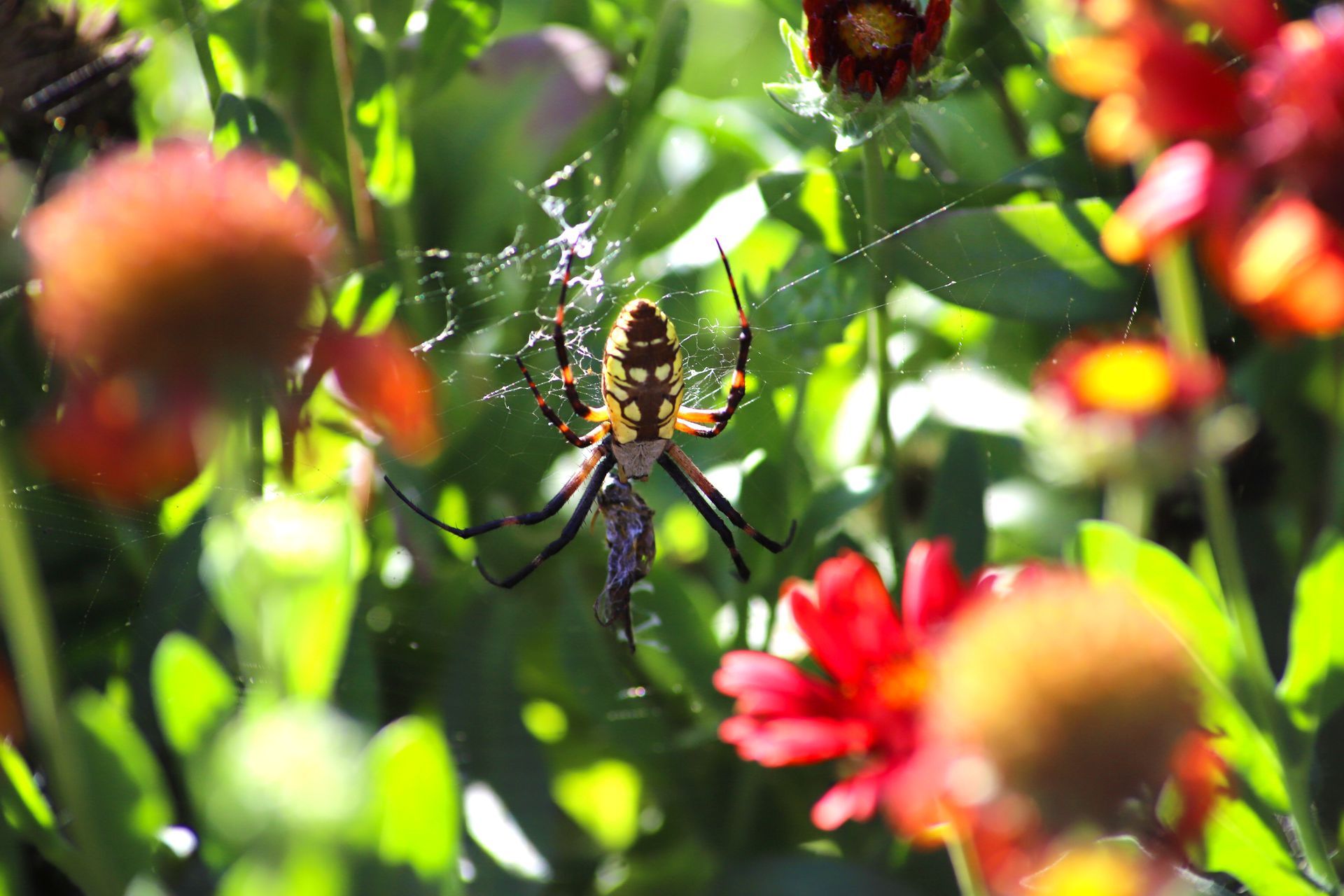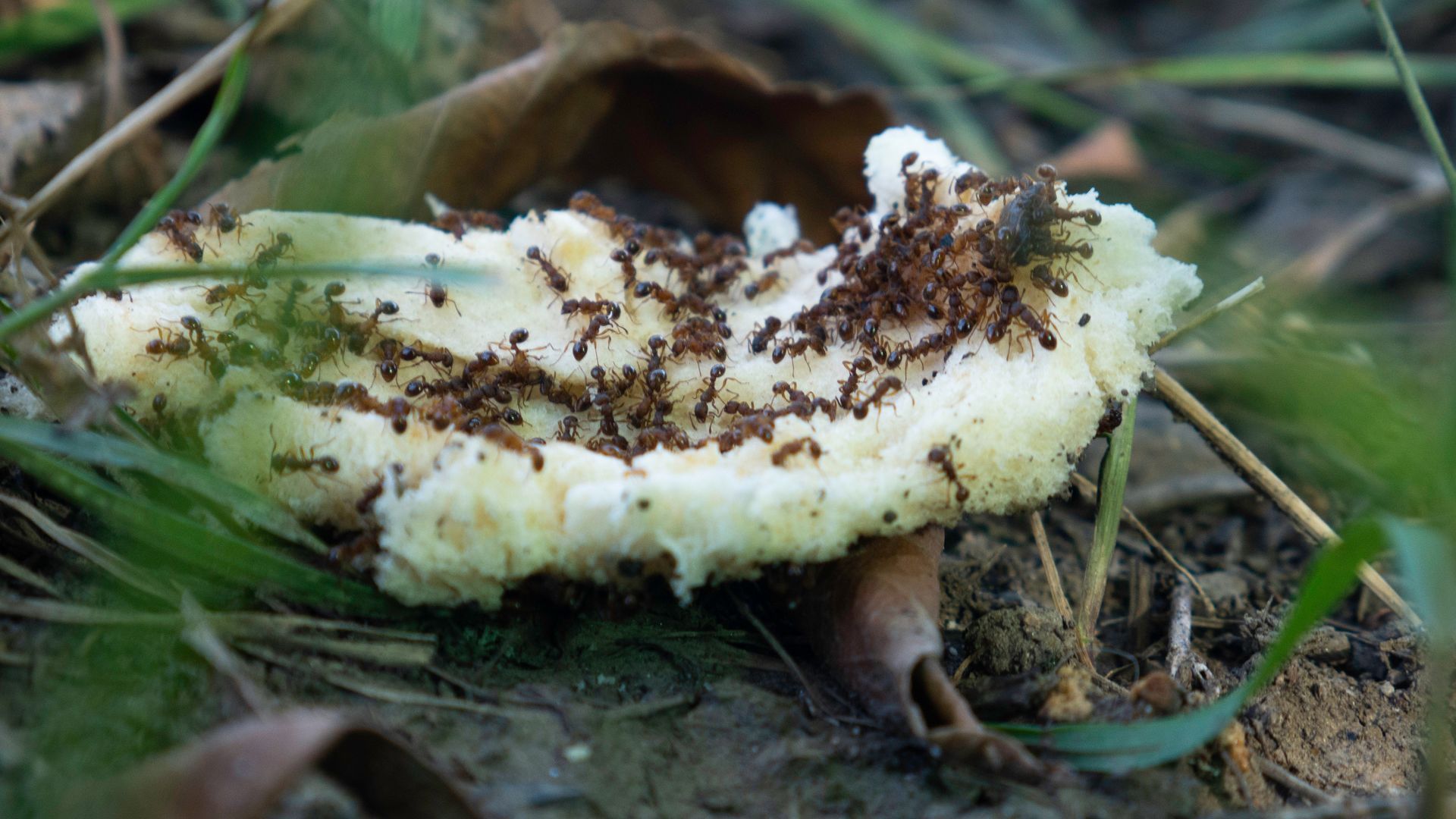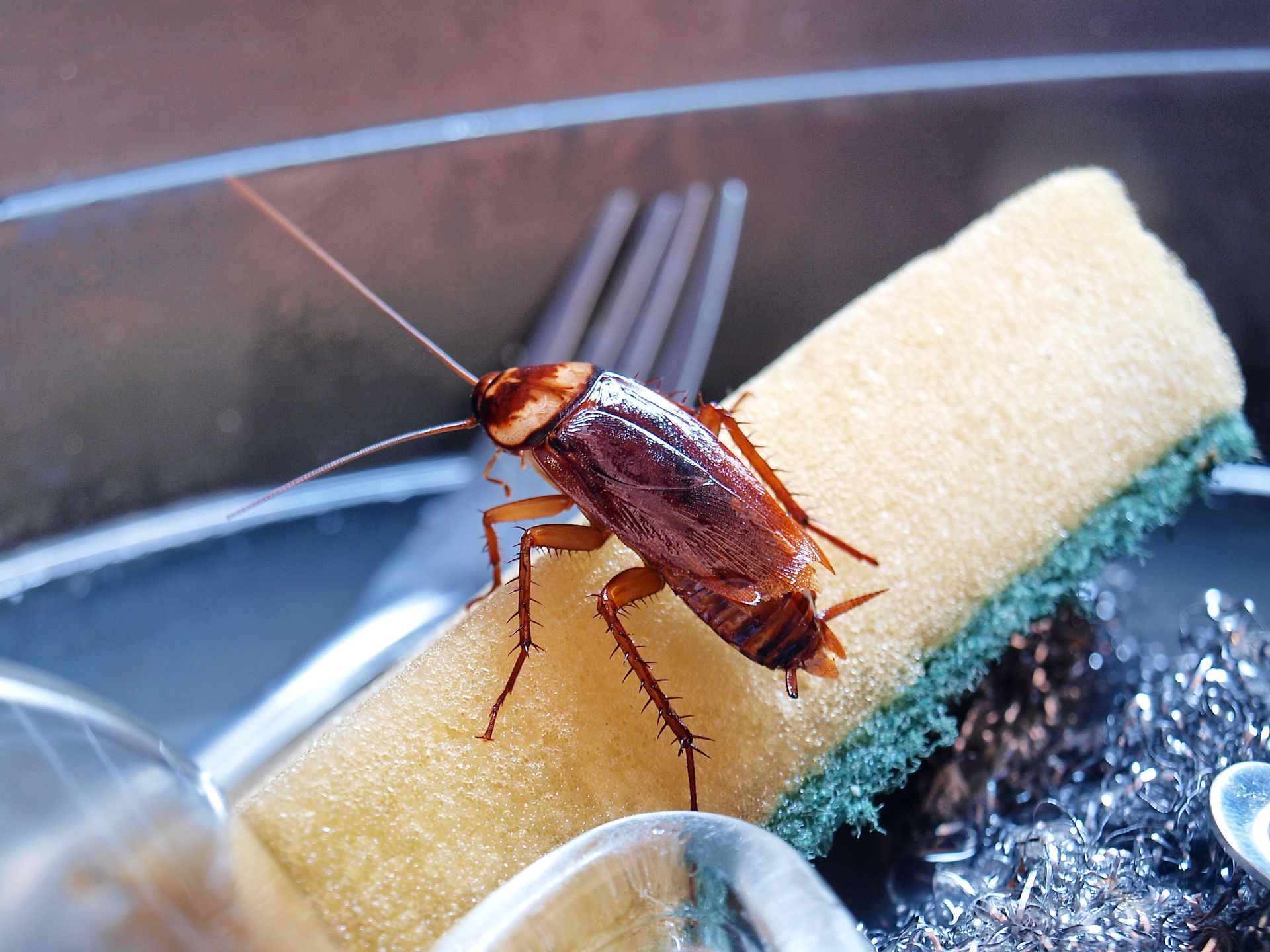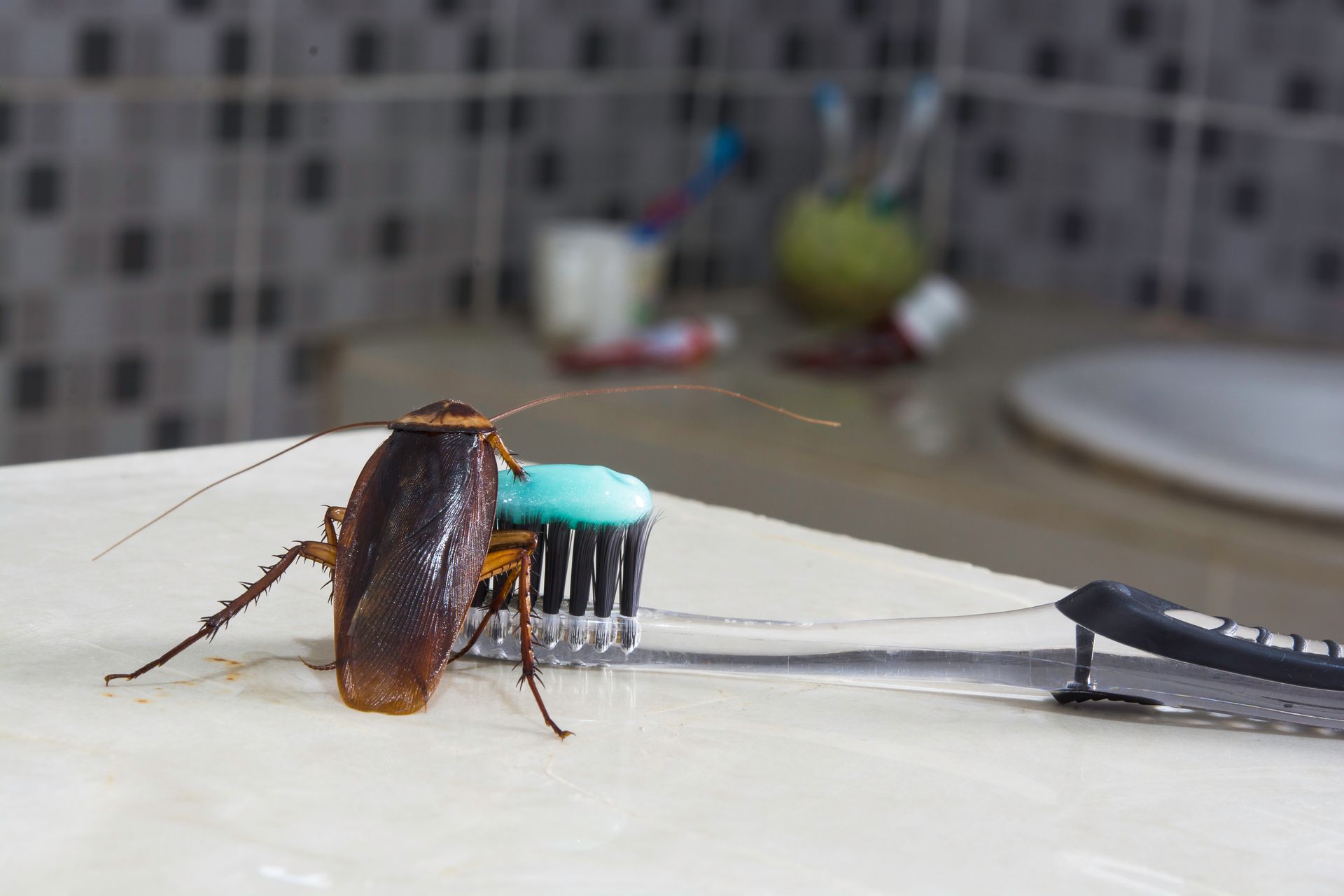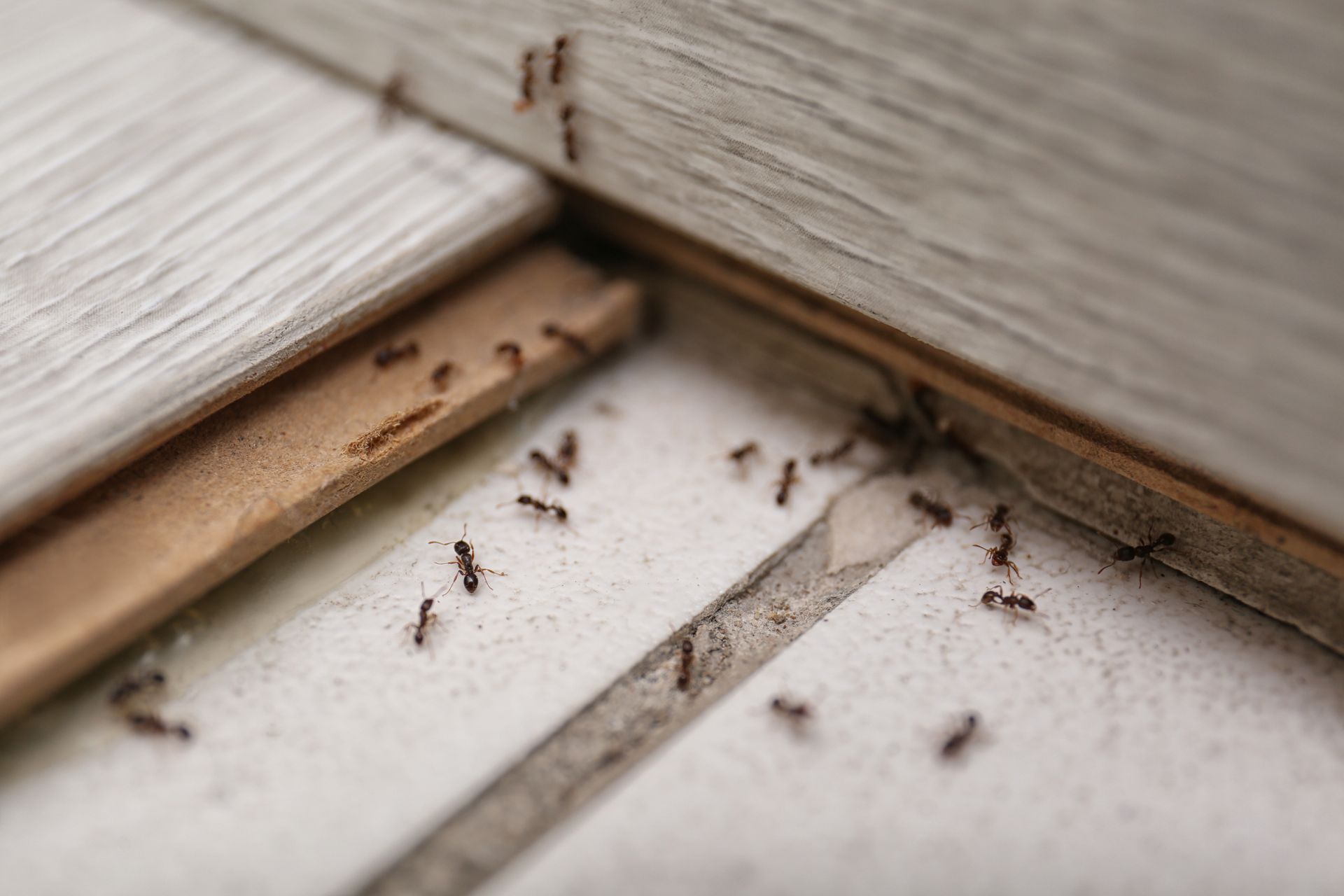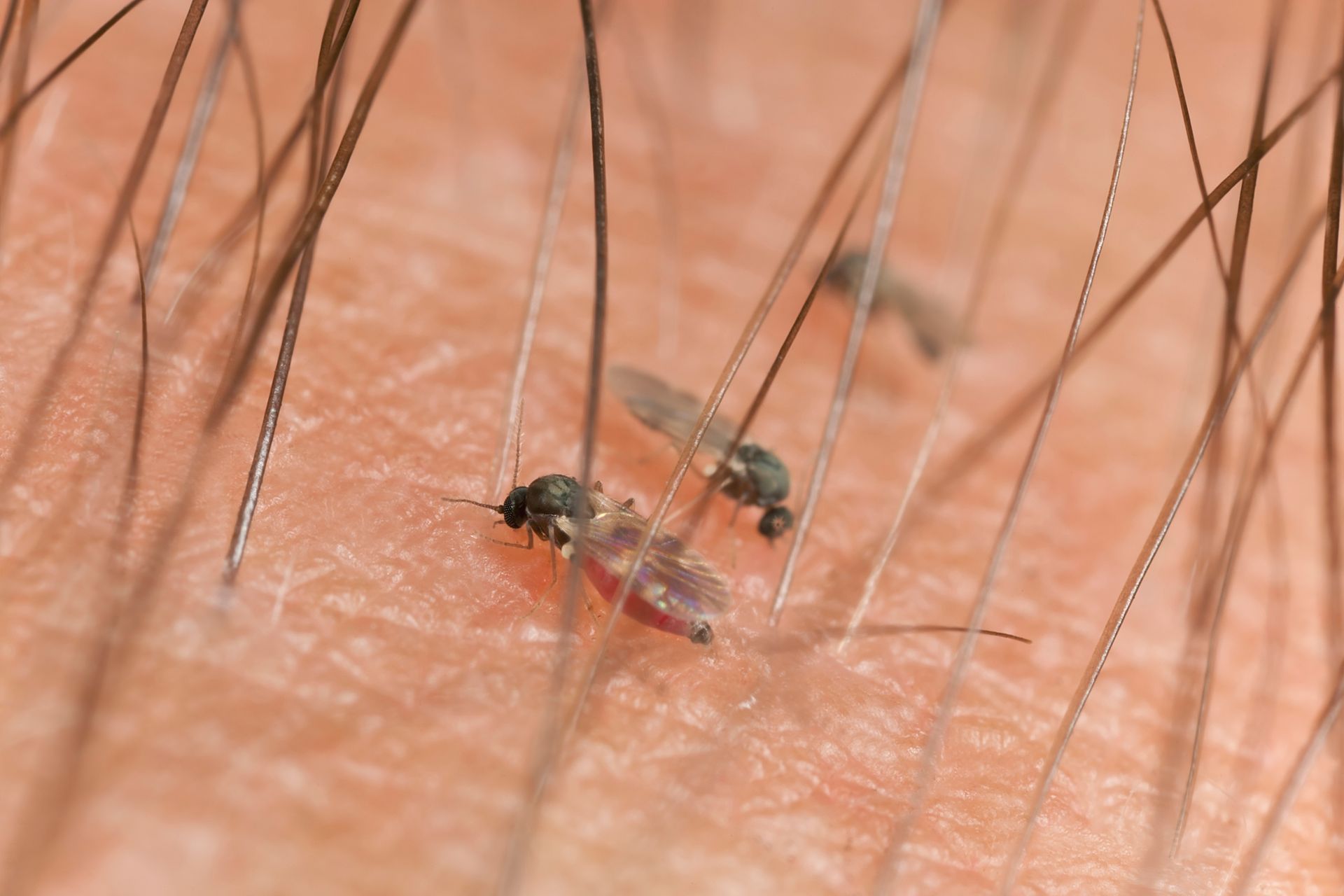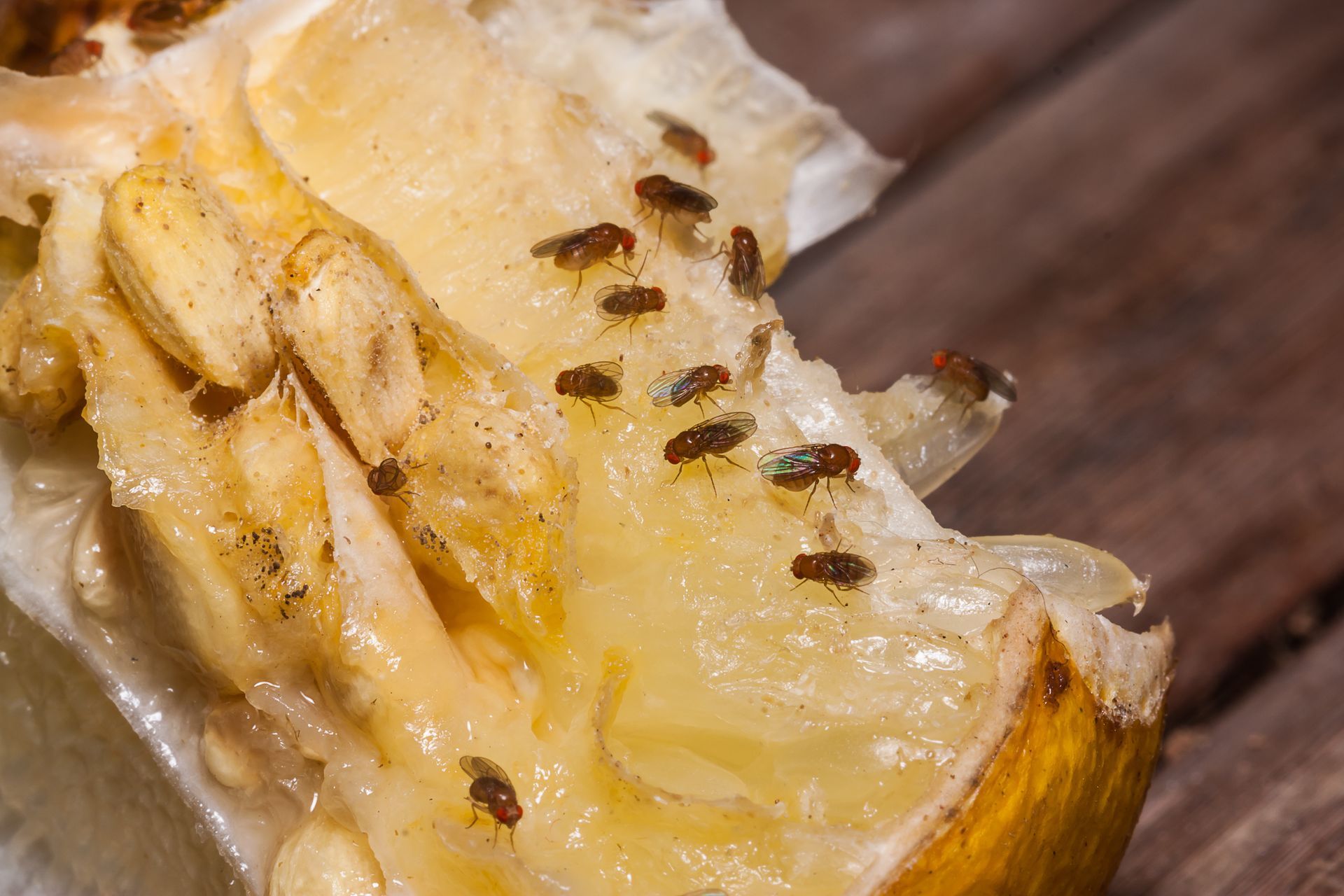Difference Between Bed Bug Bites vs Mosquito Bites

Bed bug bites and mosquito bites, while seemingly similar at first glance, are caused by two distinct pests with unique characteristics and implications. Both can result in red, itchy marks on the skin, but understanding the differences between these bites is crucial for proper identification, response, and treatment. Bed bugs are infamous for their tenacity and capacity to infiltrate residential spaces. They tend to leave bites in distinctive patterns, often clustered or lined up on exposed skin during sleep. Mosquitoes, on the other hand, are not only a nuisance but also potential vectors for various diseases which make their isolated bites a different kind of concern. Recognizing the subtle distinctions in appearance, location, and timing of these bites can help individuals take appropriate action, whether it's seeking pest control for a bed bug infestation or implementing mosquito prevention measures. This knowledge is essential for effective treatment of bites and, more importantly, for addressing the underlying pest problem to prevent future occurrences.
Bed Bug Bites
Bed bug bites present a unique challenge for both identification and management due to the varied reactions they can elicit in different individuals. These nocturnal pests leave behind a telltale pattern of bites that often appear in clusters or linear arrangements of three to five marks on exposed skin areas. The severity of reactions can range from minimal to severe, with some people experiencing only mild itching and redness, while others may develop more pronounced swelling and discomfort. In rare cases, individuals may suffer from severe allergic responses, including potentially life threatening anaphylaxis. The appearance of bites can be delayed, sometimes taking hours or even days to manifest, which can complicate early detection of an infestation. Bed bugs can survive extended periods of up to several months without feeding which contributes to their persistence as household pests. Identifying bed bug bites often involves not just examining the bites themselves, but also looking for other signs of infestation in the sleeping area like small bloodstains on bedding or the presence of bed bug exoskeletons.
Mosquito Bites
Mosquito bites are exclusively inflicted by female mosquitoes seeking blood meals for egg production. These bites, while seemingly annoying but harmless, are far from it as they can potentially lead to severe health implications as a result of secondary infections of rare mosquito borne diseases. These bites typically manifest as small, red bumps with a distinct puncture mark at the center, though reactions can vary significantly between individuals. The characteristic itchiness associated with mosquito bites stems from the body's immune response to proteins in the mosquito's saliva which is injected during the feeding process. Mosquitoes are most active during twilight hours and are drawn to their human targets by a combination of carbon dioxide exhalation, body heat, and pheromones released in sweat. The severity of reactions can range from mild with some individuals experiencing "skeeter syndrome" which is characterized by large, painful welts and, in extreme cases, anaphylaxis. Unlike bed bugs, mosquito bites often appear as isolated marks rather than in clusters and the reaction is usually immediate. Understanding these characteristics is crucial not only for identifying mosquito bites but also for implementing effective prevention strategies, given the potential for mosquitoes to transmit various diseases.
Difference in Symptoms Between Bed Bug and Mosquito Bites
While both bed bug and mosquito bites can cause discomfort and concern, there are distinct characteristics that set them apart. Understanding these differences is crucial for proper identification and effective treatment as well as for determining the appropriate pest control measures to prevent future occurrences.
Appearance
The appearance of bed bug and mosquito bites offers one of the most reliable ways to distinguish between these two types of insect bites.
- Bed bug bites typically manifest as small, red, pimple like marks that appear in distinctive patterns.
- Mosquito bites usually present as isolated, raised bumps that are more swollen and hive like in appearance, often with a visible puncture mark at the center.
It's important to note that bite appearances can vary based on individual skin tone and reactivity, with bites potentially appearing less visible or differently colored on darker skin tones.
Number of Bites
The quantity and arrangement of bites can provide significant clues in differentiating between bed bug and mosquito encounters.
- Bed bugs are notorious for leaving multiple bites in close proximity that often form distinctive patterns such as straight lines, zigzags, or clustered groupings. This characteristic arrangement is a result of their feeding behavior which is a result of them biting several times during a single feeding session while moving slightly between each bite.
- Mosquito bites typically appear as scattered, individual marks across exposed skin areas. This dispersed pattern occurs because mosquitoes are more likely to bite once and then fly away.
It's important to note that in cases of severe mosquito infestations or prolonged outdoor exposure, multiple mosquito bites can also occur, though they generally lack the organized patterns associated with bed bug bites.
Bite Sites
The location of bites on the body can offer valuable insights into whether bed bugs or mosquitoes are responsible.
- Mosquitoes, being flying insects, tend to target easily accessible, exposed areas of skin. As a result, their bites are often found on parts of the body that aren't covered by clothing like the legs, arms, neck, and face. Some species, like Aedes mosquitoes, have shown a preference for feeding around the feet and ankles which is thought to be a result of the odors produced by sweaty feet.
- Bed bug bites can occur in a wider range of locations on the body, including areas that may be covered by loose fitting sleepwear. Common sites for bed bug bites include the neck, face, back, chest, arms, legs, and even around the crotch area. Bed bug bites tend to appear in linear patterns which often follow where bedding meets the skin or where exposed skin appears along the edges of clothing.
Time of Day When Bites Occur
The timing of bites can be a crucial factor in distinguishing between bed bug and mosquito encounters.
- Bed bugs are primarily nocturnal creatures that prefer to feed on stationary hosts during nighttime hours when people are asleep. This nocturnal feeding pattern often results in individuals discovering bites upon waking, although it's important to note that bite marks may not become apparent for several days after the actual feeding occurs. A consistent increase in the number of bites over time, particularly those noticed in the morning, can be indicative of a bed bug infestation.
- Conversely, mosquito bites tend to occur more sporadically and are not confined to specific times of day, though they are often associated with outdoor activities, especially during dawn and dusk when many mosquito species are most active.
Time of Year When Bites Occur
The timing and frequency of bites can provide valuable insights into whether bed bugs or mosquitoes are the culprits.
- Bed bugs, being indoor pests that reside in close proximity to their human hosts, maintain consistent activity throughout the year and are unaffected by seasonal changes. This means that bed bug bites can occur at any time, regardless of the outdoor temperature or weather conditions.
- Mosquito activity is heavily influenced by seasonal fluctuations. These outdoor insects thrive in warmer temperatures, with their populations and biting frequency typically starting during spring and peaking during summer and early autumn months. As temperatures drop in late autumn and winter, mosquito activity significantly decreases with many species entering a dormant state or dying off in colder climates.
This cyclical pattern of mosquito activity contrasted against the year round presence of bed bugs can be a key factor in determining the source of persistent or seasonal bite occurrences.
Reaction Time
The reaction time to bites can be a key differentiator between bed bug and mosquito encounters.
- Mosquito bites typically elicit an immediate response with itchiness and visible welts appearing almost instantaneously after the insect finishes feeding. This quick reaction is due to the body's immediate immune response to the mosquito's saliva.
- Bed bug bites, on the other hand, often have a delayed reaction. Many individuals do not feel the bite occurring and may not notice any symptoms for hours or even days after the encounter.
Infection
The potential for disease transmission and infection is a significant factor that distinguishes mosquito bites from bed bug bites.
- Mosquitoes are notorious vectors for a variety of serious illnesses including West Nile virus, dengue fever, Zika, and malaria. These infections collectively contribute to hundreds of thousands of deaths globally each year. This disease carrying capacity makes mosquito bites a significant public health concern, particularly in certain geographical regions where these diseases are prevalent.
- While bed bugs are undoubtedly troublesome, they are not recognized as vectors for disease transmission to humans via their feeding.
Healing Time
The healing time for bites can be a useful indicator in distinguishing between bed bug and mosquito encounters.
- Mosquito bites typically have a relatively short healing period, with most bites resolving within a few days to a week after the initial bite occurs as long as a wound isn’t opened from scratching. The body's immune response to mosquito saliva usually peaks quickly and then subsides which leads to a faster recovery time.
- Bed bug bites often have a more prolonged healing process. These bites can persist for a week and, in some cases, may linger for even longer periods. The extended duration of bed bug bite symptoms is aggravated further by repeated bites over time if an infestation is present.
It's important to note that scratching or irritating either type of bite can extend the healing time and potentially lead to secondary infections which emphasizes the importance of proper bite care regardless of the source.
Other Signs Associated with Bite Activity
Beyond the bites themselves, there are additional signs that can help identify whether you're dealing with bed bugs or mosquitoes. Mosquito bites typically leave little evidence beyond the bite itself, due to the insect's quick feeding process and immediate departure. Bed bug presence often manifests through various distinctive indicators.
- One distinctive indicator is the presence of small blood stains on bedding, which occur when the anticoagulants in bed bug saliva cause continued bleeding after feeding.
- Bed bugs also leave behind dark, pinpoint sized excrement stains that are often found in the seams and crevices of mattresses, bed frames, and nearby furniture. These marks result from the insects' excretion of processed blood meals.
- Other signs of bed bug activity may include the presence of shed exoskeletons, tiny eggs or eggshells, and a musty odor in heavily infested areas.
- The discovery of live bed bugs, though challenging due to their small size and hiding behavior, is another definitive sign of infestation.
These additional indicators make bed bug presence more detectable compared to mosquito activity, which typically leaves no lasting environmental evidence beyond the bites themselves.
Treatment
Treatment approaches for bed bug and mosquito bites are generally similar, as both typically cause localized skin reactions that can be managed with home remedies and over the counter solutions. For both types of bites, the primary focus is on symptom relief and preventing secondary infections. Key treatment steps include washing the affected areas with soap and water, applying antiseptic lotions or anti itch creams to alleviate discomfort, and using cold compresses to reduce swelling. Over the counter antihistamines can help manage itching and allergic reactions for both bite types. It's essential to avoid scratching, as doing so may compromise skin integrity and increase infection risk. Overall, while the immediate treatment of bites is similar, the long term management strategies differ significantly between these two types of insect encounters.
When To See a Doctor for Bug Bites
Although many bed bug and mosquito bite cases can be treated at home, some situations necessitate professional medical care. The severity of symptoms and individual health factors play crucial roles in determining when professional medical care is necessary. Generally, bites from these insects are more of a nuisance than a serious health threat. However, complications can arise in cases of severe allergic reactions or mosquito borne bacterial or viral infections. It's important to monitor bite symptoms closely and be aware of signs that indicate a need for medical intervention. Seeking prompt medical attention can prevent potentially serious complications and ensure appropriate treatment. The following symptoms indicate a need for consultation with a healthcare professional:
- Severe allergic reactions, especially difficulty breathing or a feeling of throat closure (anaphylaxis)
- Development of fever, which may indicate an infection or, in rare cases with mosquito bites, a transmitted disease
- Widespread swelling or hives extending beyond the bite sites
- Formation of blisters or pus filled lesions at the bite sites
- Symptoms that persist or intensify despite the use of readily available remedies
- An unusually large number of bites, particularly if they appear infected
- Signs of a spreading infection like increasing redness, warmth, or streaking lines that emerge from the bite sites
- Unexplained symptoms like fatigue, joint pain, or neurological issues following mosquito bites in areas known for mosquito borne diseases
What Other Kind of Bug Bites Could They Be?
While bed bugs and mosquitoes are common sources of insect bites, various other bugs can cause similar skin reactions which makes identification challenging. It's important to consider these alternative possibilities when assessing unexplained bites or skin irritations:
- Fleas: These small, wingless insects often target the lower legs and ankles, leaving clusters of small, red, itchy bites that can be easily mistaken for bed bug bites.
- Flies: Certain biting fly species can inflict painful bites that may develop into large, itchy blisters.
- Spiders: Spider bites can result in large, more painful red welts that often have two visible puncture marks. Some species' bites can pose significant health risks due to venom that can cause tissue damage.
- Mites: Various mite species can cause skin irritation or rashes, with some species like scabies mites burrowing into the skin and creating distinctive, intensely itchy tracks.
- Ticks: These arachnids attach to the skin and can leave a single, painful bite often surrounded by a characteristic bullseye shaped rash. These bites are particularly concerning due to potential disease transmission like Lyme disease.
- Ants: Some ant species like fire ants can inflict painful bites or stings that result in small, red, burning welts that often appear in clustered patterns.
Understanding these alternatives is crucial for proper identification and treatment, as each type of bite may require different management approaches and treatment types due to associated disease risks.
Prevention
Preventing bed bug and mosquito bites requires different strategies due to the distinct habits and habitats of these pests.
- For mosquitoes, prevention focuses on environmental management and personal protection. Key steps include eliminating standing water around the home to reduce breeding sites, repairing or installing proper window and door screens, and using EPA-approved insect repellents when outdoors, especially during peak mosquito hours. Wearing long sleeved clothing and pants can provide additional protection in mosquito prone areas.
- Bed bug prevention, on the other hand, centers on vigilance and early detection. When traveling, thoroughly inspect hotel rooms, particularly around bed frames and mattresses and avoid placing luggage on the floor. At home, regularly inspect bedding and furniture for signs of infestation, use bed bug-proof mattress encasements, and be cautious when introducing secondhand furniture or returning from trips. Decluttering efforts can also reduce potential bed bug harborage areas.
For both pests, awareness and proactive measures are key, but bed bug infestations often require professional pest control services for effective eradication, while mosquito prevention can typically be managed through consistent personal and household practices.
How to Get Rid of Bed Bugs
Eradicating bed bugs can be a challenging and often frustrating process that typically requires a multi-faceted approach and, in many cases, professional intervention. While DIY methods can be effective for minor infestations, severe cases usually require the expertise of pest control professionals experienced in bed bug elimination. If you're attempting to tackle a bed bug problem on your own, consider the following strategies:
- Heat treatment: Wash and dry all bedding, clothing, and fabric items at high temperatures (at least 120°F) for a minimum of 30 minutes to kill bed bugs and their eggs.
- Decluttering: Remove unnecessary items from the infested area but be sure to carefully inspect and treat them before relocating to prevent spread.
- Vacuuming: Thoroughly vacuum mattresses, bed frames, furniture, and baseboards and immediately dispose of the vacuum contents in a sealed bag outside the home.
- Encasement: Use bed bug proof encasements on mattresses and box springs to trap existing bugs and prevent new infestations.
- Cold treatment: Eliminate bed bugs by sealing non-washable items in plastic bags and exposing them to freezing temperatures (0°F or below) for a minimum of 96 hours.
- Steam cleaning: Use a high temperature steamer on mattresses, furniture, and carpets as the heat can effectively kill bed bugs on contact.
- Chemical treatments: Apply EPA-registered bed bug pesticides and follow instructions carefully while focusing on cracks, crevices, and furniture joints.
- Diatomaceous earth: Sprinkle food-grade diatomaceous earth in infested areas to dehydrate and kill bed bugs over time.
- Professional bed bug treatments: Qualified bed bug experts can effectively treat a home using whole house heat treatments of chemical treatments to eradicate bed bug activity at its source. They are trained to prevent spread and typically offer a guarantee that offers secondary services that ensure complete eradication.
Remember, persistence is key in bed bug eradication and multiple treatments may be necessary to fully resolve the infestation.
How to Get Rid of Mosquitoes
Controlling mosquito populations and reducing their impact on your living environment requires a combined strategies that address both prevention and elimination. Here are several effective strategies to help get rid of mosquitoes:
- Eliminate standing water: Remove or regularly empty any containers that collect water like birdbaths, flowerpot saucers, and old tires as these serve as breeding sites for mosquitoes.
- Maintain your yard: Keep grass short and trim vegetation to reduce mosquito resting areas. Remove leaf piles and yard waste that can retain moisture and provide shelter for hiding mosquitoes and their larvae.
- Use larvicides: Treat large bodies of standing water that can't be eliminated with EPA-approved larvicides to prevent mosquito larvae from developing into adults.
- Screen maintenance: Properly install and repair window and door screens to block mosquito entry into your living spaces.
- Employ fans: Use outdoor fans in seating areas to create air movement that disrupts mosquito flight and disperses the chemical cues they use to locate hosts.
- Apply mosquito repellents: Use EPA-registered repellents on exposed skin and clothing when outdoors and be sure to follow the label instructions carefully.
- Consider mosquito netting: Use netting around outdoor living spaces or sleeping areas for physical protection against mosquito bites.
- Professional mosquito control: Hire a pest control service for regular treatments, especially for large properties or severe infestations, as they can provide targeted and long-lasting solutions.
- Use natural predators: Encourage mosquito eating animals like bats and certain bird species by installing appropriate habitats.
Remember, a combination of these methods is often most effective for long term mosquito control and consistency in application is key to maintaining a mosquito free environment.
Contact EcoGuard Pest Management if You Are Dealing with Bed Bugs or Mosquitos
If you're grappling with bed bug infestations or persistent mosquito problems, don't let these pests disrupt your peace of mind and quality of life. EcoGuard Pest Management offers professional, effective solutions tailored to your specific situation. Our experienced technicians are equipped with the latest tools and techniques to tackle even the most stubborn bed bug infestations and implement comprehensive mosquito control strategies. We understand the stress and health concerns associated with these pests, and we're committed to providing safe, environmentally conscious treatments that protect your home and family. Don't waste time and money on ineffective DIY methods – reach out to EcoGuard Pest Management today for a consultation. Remember, early intervention is key to preventing larger infestations, so don't hesitate to contact us at the first sign of bed bugs or mosquito issues.
Bed Bug vs Mosquito Bite FAQs
How can you tell the difference between a bed bug bite and a mosquito bite?
Bed bug bites typically appear in clusters or linear patterns, often in areas exposed during sleep. These bites may not become apparent for several days following the initial encounter. In contrast, mosquito bites usually appear as isolated, raised welts that become noticeable almost immediately after being bitten. Additionally, bed bug bites tend to be smaller, and flatter compared to the more pronounced, puffy appearance of mosquito bites.
How do you tell if a bite is from a bed bug?
Bed bug bites appear on areas of the body exposed during sleep like the arms, legs, or neck. They usually manifest as small, red, itchy bumps that appear in a line or zigzag pattern. They may take several days to become visible after the initial bite. Other signs of bed bug bites include finding small blood stains on your sheets or observing dark spots (bed bug feces) on your mattress or nearby furniture.
Why do I keep waking up with bites but no bed bugs?
If you're waking up with bites but can't find bed bugs, there could be several explanations. Bed bugs are notoriously difficult to spot due to their small size and nocturnal habits, so they may be present but hiding in less obvious places like cracks in furniture, behind baseboards, or in electrical outlets. Alternatively, the bites could be from other insects such as fleas, mites, or even mosquitoes that have found their way into your sleeping area. It's also possible that the marks are not insect bites at all, but rather a skin condition or an allergic reaction to something in your environment.


